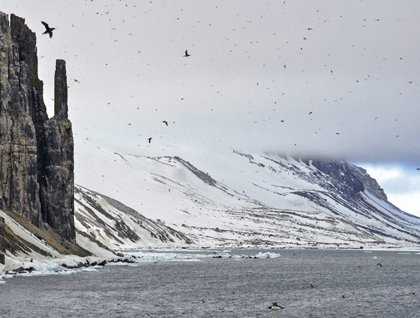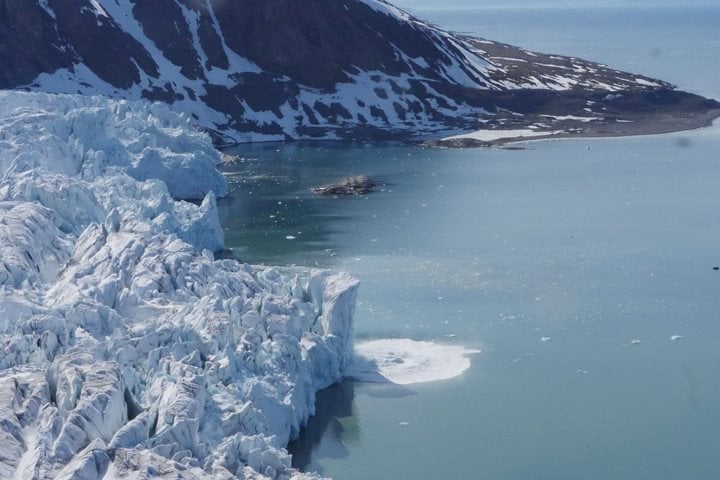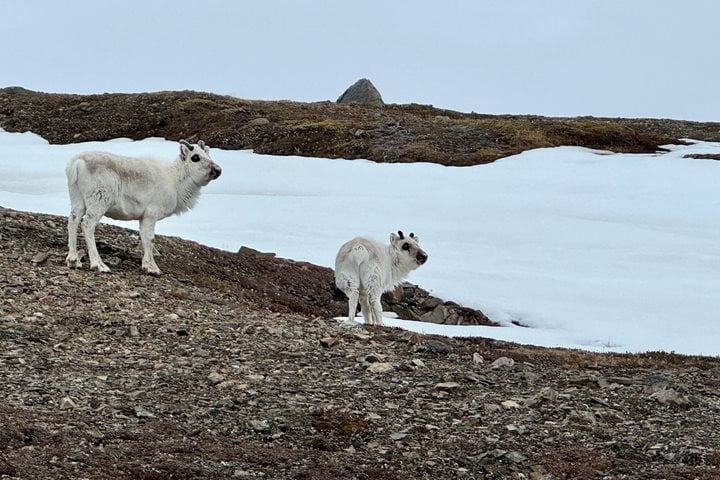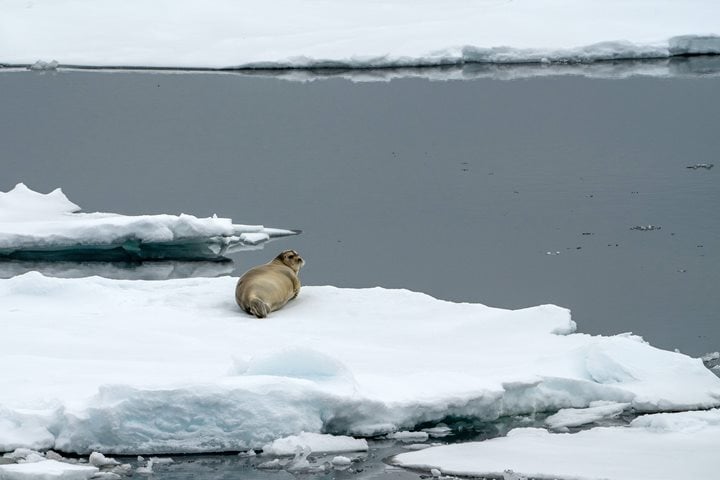At 4:00 a.m., light streams in through the cabin porthole. Since we are way above the Arctic Circle, the sun never sets in summertime. Overcast skies don’t make a bit of difference, it’s still bright outside. Way off in the distance horizontal slivers of snowy white and gray mountains surrounded by light clouds are visible. Svalbard light is always wonderful to witness and photograph. This turns out to be another beautiful morning in Hinlopen Strait, the body of water which divides Spitzbergen and Nordaustlandet.
The ship’s engines turn off and on. Now it’s time for us to start our approach to the majestic doleritic Alkefjellet cliffs along Cape Fanshaw to see the little auks (dovekie), black and Brünnich’s guillemots, northern fulmars, and glaucous gulls. The guillemots crowd together from just above the water’s edge up to a hundred meters above the sea. The scene is reminiscent of medieval castles with spires almost touching the sky. The wind is blowing frigid as we are all trying to keep warm on the bow of the ship.
Here in Svalbard, one is always reminded of how the birds and mammals utilize the Barents Sea for its abundance of food. Along the steep vertical cliff we see and hear hundreds of thousand pairs of mating birds. The noise, as we coast along the side of the cliffs, is deafening. The Brünnich’s guillemots nest in large colonies along the ledges, neck to neck alongside the kittiwakes. If you listen carefully, you can hear an occasional snow bunting singing. It is the only nesting song bird in Svalbard. It’s early season, eggs are starting to appear. Hatching of the eggs will take place approximately 32 days later. Their eggs are shaped like a pear, and very individualistic in color and pattern. When the chicks hatch and fledge (around 21 days old) they are followed out to sea by their fathers and taught to fend for themselves. It’s at this time that they are most vulnerable to the glaucous gulls and arctic foxes that wait for them below the cliffs.
Late morning we sailed through first-year sea ice looking for polar bears, and came across a healthy male off in the distance at Palanderbuhkta. We had a wonderful sighting; he walked towards us in a curious fashion, and then sauntered off for more desirable food.
After lunch, we scheduled a leg-stretch walk along the rocky coastline adjacent to the Idunbreen Glacier, named after a Norse mythological goddess. Along the way we saw many pairs of purple sandpipers, eiders, and a sanderling. The wind was cold and fierce, but now the sun was out, providing us an invigorating and engaging nature walk along the pristine Svalbard beaches. Another great day in the High Arctic.







